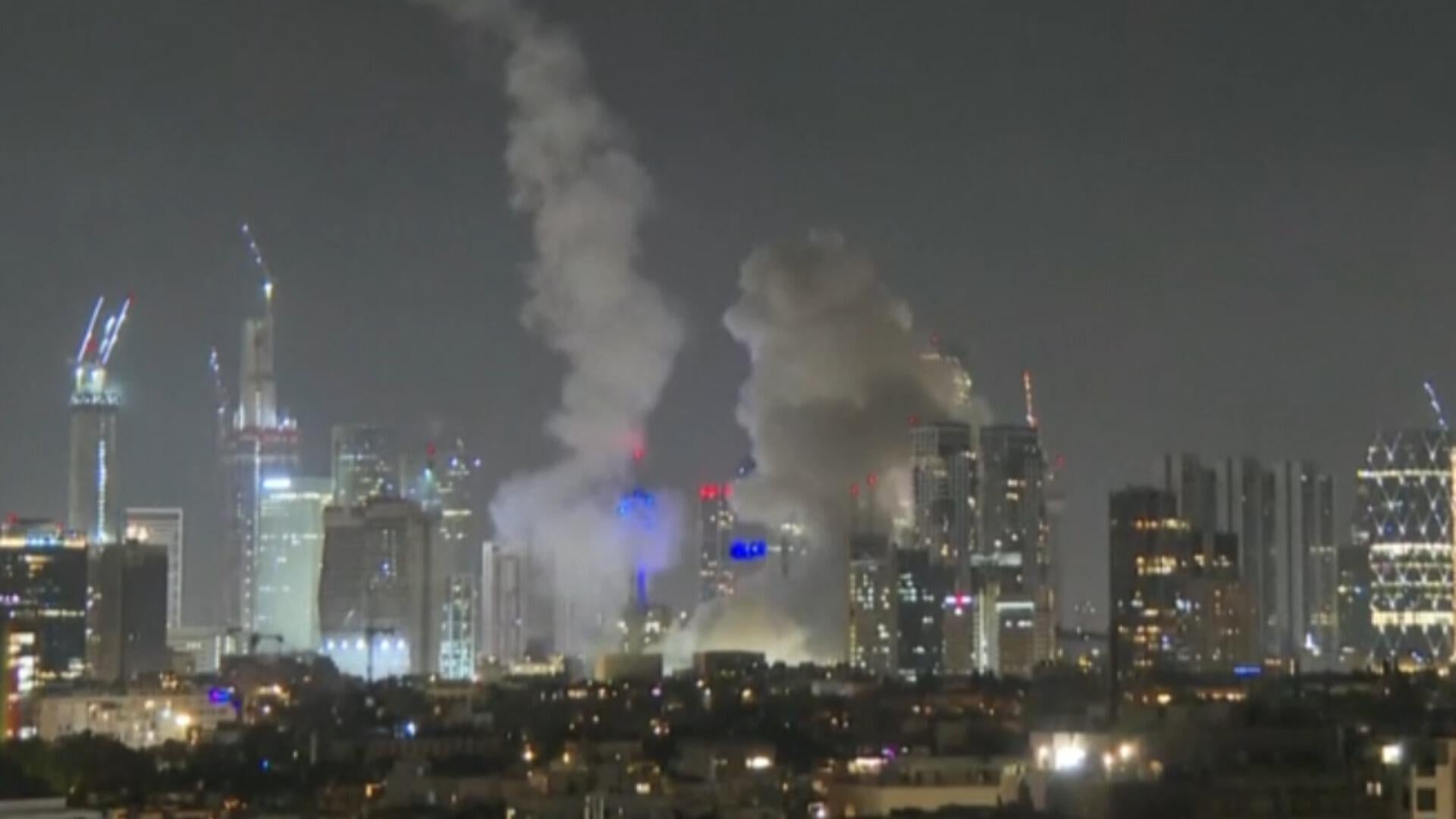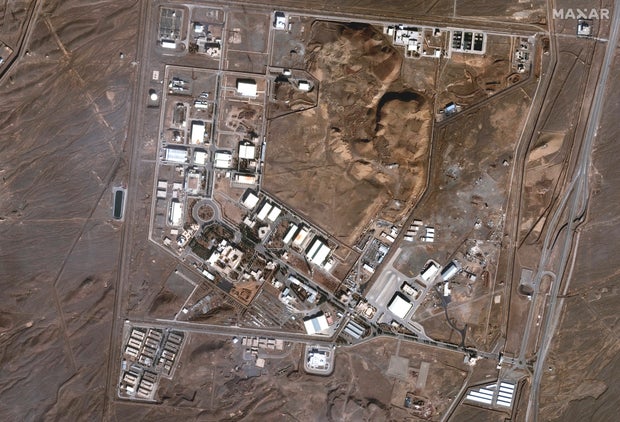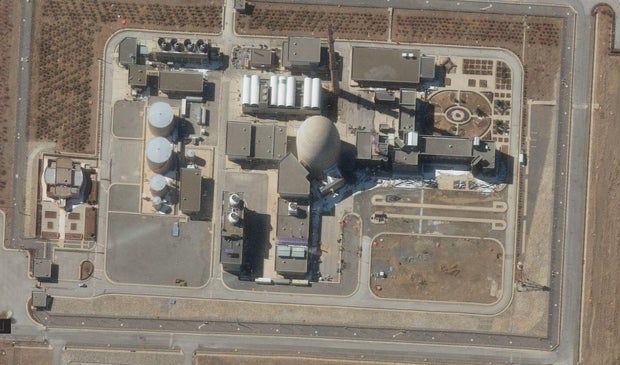Israeli airstrikes hit multiple Iran nuclear sites. Here's what we know about them.
The Israeli military targeted Iranian nuclear facilities, research scientists and senior military commanders in dozens of preemptive airstrikes early Friday morning in what it dubbed "Operation Rising Lion."
The strikes — which the Israel Defense Forces said included dropping "over 330 different munitions" on more than 100 targets in Iran — prompted Iran to launch about 100 missiles at Israel in a retaliatory attack later Friday. The IDF said its Iron Dome missile defense system intercepted most of the missiles, and U.S. officials confirmed that the United States helped Israel intercept Iranian missiles.
IDF spokesman Brig. Gen. Effie Defrin claimed intelligence showed "the Iranian regime has made significant progress in achieving nuclear capability and its ability to act against us," calling it an emerging and existential threat to Israel. Secretary of State Marco Rubio said the U.S. was not involved in Israel's airstrikes on Iran.
The attacks came one day after the International Atomic Energy Agency's Board of Governors censured Iran for the first time in 20 years for not working with its inspectors. Iran immediately announced it would establish a third enrichment site in the country and swap out some centrifuges for more advanced ones.
The IAEA is the United Nations' Vienna-based nuclear watchdog. It said in a confidential report last month that Iran has further increased its stockpile of uranium enriched to near weapons-grade levels, and called on Tehran to urgently change course and comply with the agency's probe.
President Trump on Friday urged Iran to "make a deal, before there is nothing left" and to agree to new restrictions on its nuclear program while it still can. The president has previously said Iran cannot be allowed to enrich uranium, a term Iran has not been willing to accept. Steve Witkoff, the president's Middle East envoy, was set to hold a sixth round of talks with Iran in the Gulf state of Oman on Sunday.
Here's a look at some major Iranian sites and their importance in Tehran's program.
Natanz enrichment facility
Iran's nuclear facility at Natanz, located some 135 miles southeast of Tehran, is the country's main enrichment site.
Part of the facility on Iran's Central Plateau is underground to defend against potential airstrikes. It operates multiple cascades, or groups of centrifuges working together to more quickly enrich uranium.
, or Pickax Mountain, which is just beyond Natanz's southern fencing. Natanz has been targeted by the Stuxnet computer virus, believed to be an Israeli and American creation, which destroyed Iranian centrifuges. Two separate sabotage attacks, attributed to Israel, also have struck the facility.
In about Israel's strikes, IAEA Director-General Rafael Mariano Grossi said Iran confirmed that its Natanz Fuel Enrichment Plant had been attacked. He said the above-ground portion of the plant where Iran was producing uranium enriched up to 60% had "been destroyed" and centrifuges may have been damaged. He said Iranian authorities also reported attacks on the Fordow Fuel Enrichment Plant and Esfahan site.
Fordo enrichment facility
Iran's nuclear facility at Fordo is located some 60 miles southwest of Tehran. It also hosts centrifuge cascades, but isn't as big a facility as Natanz.
Buried under a mountain and protected by anti-aircraft batteries, .
Its construction began at least in 2007, according to the IAEA, although Iran only informed the U.N. nuclear watchdog about the facility in 2009 after the U.S. and allied Western intelligence agencies became aware of its existence.
Bushehr nuclear power plant
on the Persian Gulf, some 465 miles south of Tehran. Construction on the plant began under Iran's Shah Mohammad Reza Pahlavi in the mid-1970s. After the 1979 Islamic Revolution, the plant was repeatedly targeted in the Iran-Iraq war. Russia later completed construction of the facility.
Iran is building two other reactors like it at the site. Bushehr is fueled by uranium produced in Russia, not Iran, and is monitored by the IAEA.
Arak heavy water reactor
is 155 miles southwest of Tehran. Heavy water helps cool nuclear reactors, but it produces plutonium as a byproduct that can potentially be used in nuclear weapons. That would provide Iran another path to the bomb beyond enriched uranium, should it choose to pursue the weapon. Iran had agreed under its 2015 nuclear deal with world powers to redesign the facility to relieve proliferation concerns.
The U.S. withdrew from the international nuclear agreement known as the JCPOA, or Joint Comprehensive Plan of Action, in 2018, and Iran partially withdrew in 2019.
Isfahan Nuclear Technology Center
The facility in Isfahan, some 215 miles southeast of Tehran, employs thousands of nuclear scientists. It also is home to three Chinese research reactors and laboratories associated with the country's atomic program.
Tehran Research Reactor
The Tehran Research Reactor is at the headquarters of the Atomic Energy Organization of Iran, the civilian body overseeing the country's atomic program. The U.S. actually provided Iran the reactor in 1967 as part of America's "Atoms for Peace" program during the Cold War. It initially required highly enriched uranium but was later retrofitted to use low-enriched uranium over proliferation concerns.












